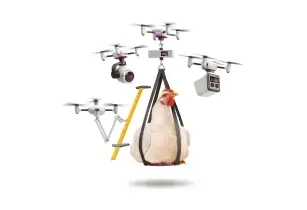‘Digitise’ is one of the current buzzwords in the animal production industry, but in common with many such terms, it can mean different things to different people
According to the Cambridge Dictionary, ‘Digitise’ is defined as: “to change something such as a document to a digital form (a form that can be stored and read by computers).” Merely making records available in a form that can be accessed via a computer really does not help anyone at all! We might as well continue to write notes on pieces of paper, mark numbers on printed charts. We would just need a larger place to store them!
What we really need to be able to do is use such data in ways that extract value from such records. It may be as simple as converting tables of numbers into charts and graphs; most of us are able to identify trends and patterns in a far easier way from pictures rather than columns and rows of numbers.
The next step then is to take the recorded data and carry out comparisons with expectations. If we consider poultry production, there are plenty of ‘benchmarks’, the performance expected by the genetics companies. By collecting data in a digital form, however, we can determine benchmarks for individual farms or even houses with relative ease.
This comparison to expectation is immediately useful, as we can use it as an early warning system. If the data deviates significantly from expectation, a digitalised system can alert farmers and managers to investigate and remedy the situation.
The next benefit of digitising flock performance is the ability to predict outcomes. With sufficient information, machine learning systems can make very reliable predictions on items such as future weight for age, time to target weight, egg production rate, and feed consumed to end of flock – all valuable information for optimising profitability.
Having collected and analysed all the information related to a flock, or a house, or a farm, the beauty of digitised records is they are all neatly put together in one place which then allows a final benefit, that reports on flocks can be easily produced. In this era of increased vigilance on topics such as antibiotic use, animal welfare, environmental impact, such reports will become essential, if not mandatory.
This short summary of the benefits of digitalisation explains why the animal production industry is very actively implementing it. Porphyrio from Evonik is a digital recording, monitoring and predictive tool, based on animal science and utilising Evonik’s 60 years experience in nutrition and livestock management.
Contact the company website to learn how Porphyrio will benefit your enterprise: https://porphyrio.evonik.com/








